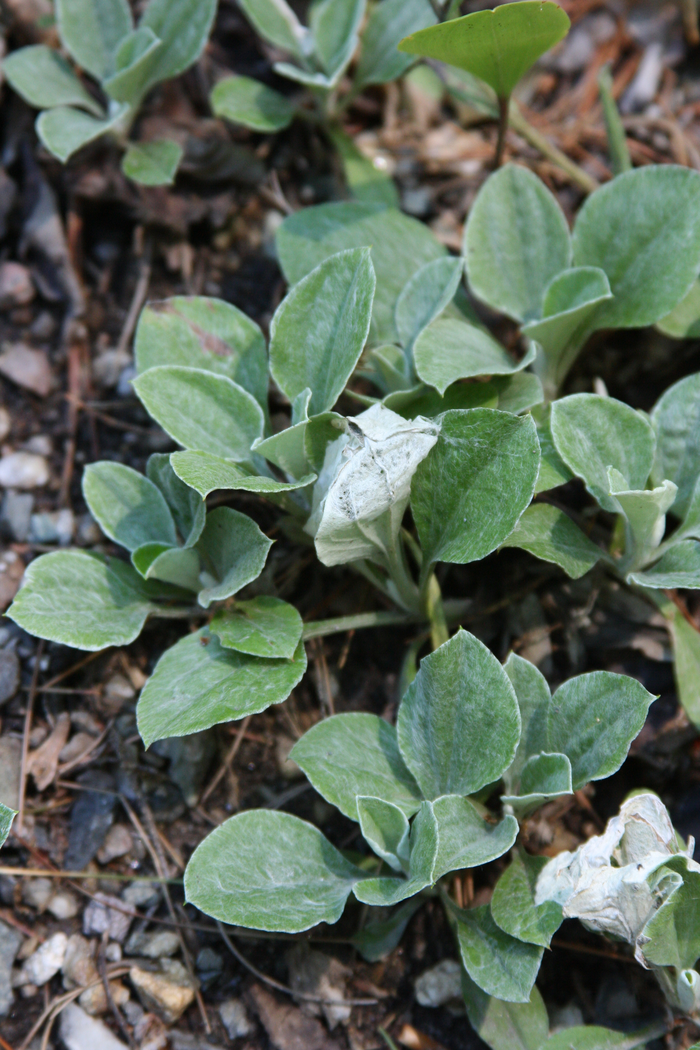General Description
Bloom Description: Blooms in spring to early summer, May to June. White flowers are tightly bunched in terminal clusters on 8" stems, resembling a cat's paw, hence the common name.
Growth Habit & Shape: Ground-hugging, fuzzy foliage spreads in a slowly expanding mat.
Soil Preferences: Thrives in dry, thin, rocky and acidic soil.
Root Description: Roots are fine, widely spreading, and shallow; prone to rot in conditions that are too wet.
Garden Uses: This plant is beautiful on a rocky ledge in full sun, and can also be used in dry, partly shaded, acidic areas, for instance under white pine (Pinus strobus).
Best Management & Maintenance: Plantain-leaved pussy toes require little to no maintenance once established, and establishment is primarily contingent on growing conditions rather than on care. If grown in an area that gathers leaf litter, remove by hand or gently blow off in late fall or early spring.
Common Problems: Issues arise when this plant is smothered by leaves or planted in an excessively wet environment, and in both of these cases the plant may develop mold or rot.
Benefits
Ornamental Value: Interesting texture and color for detailed plantings or natural areas of low ground covers.
Wildlife Benefits: Valuable host for the American lady butterfly. Flowers visited by many spring pollinators, including Andrenid bees, Halictid bees, and cuckoo bees.
Use in place of: if conditions are right, plant in place of turfgrass.
Ecology
Habitat:
Found in a variety of semi-forested habitats, woodland openings and meadow edges, typically with acidic, well-drained soil.
Native State Distributions:
Canada: Man., N.B., N.S., Que
USA: AL, AR, CT, DE, FL, GA, IL, IN, IW, KY, ME, MD, MA, MN, MI, MO, NH, NJ, NY, NC, OK, PA, RI, SC, TN, VT, VA, WV, WS.
Wetland indicator status: not classified
References
Return to Top


